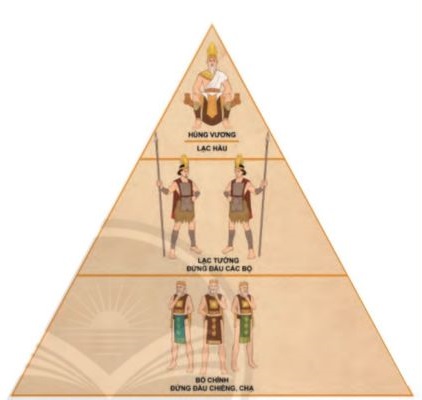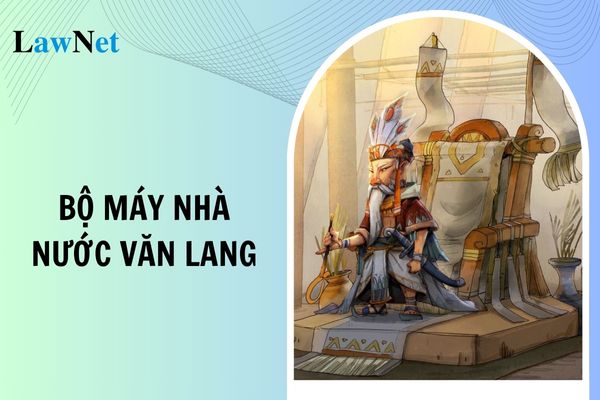What are regulations on the state apparatus of Van Lang? What is minimum teaching equipment for History and Geography in lower secondary education in Vietnam?
What are regulations on the state apparatus of Van Lang?
The Van Lang state was established around the 7th century BC. The main territory of the Van Lang state was located in the current Northern and North Central regions of Vietnam. The capital of Van Lang was Phong Chau, in the present-day Phu Tho province.
The organizational structure of Van Lang's state apparatus was as follows:

The Van Lang state apparatus was headed by King Hung, assisted by Lac hau.
Van Lang was divided into 15 departments, each headed by a Lac tuong. Under the departments, the local areas were divided into chiềng or chạ, led by Bo chinh (village elders).
Overall, the state apparatus of Van Lang was relatively simple but had an initial system.

What are regulations on the state apparatus of Van Lang? What is minimum teaching equipment for History and Geography in lower secondary education in Vietnam? (Image from the Internet)
What are learning objectives for grade 6 on contents related to Vietnam from the 7th Century BC to the beginning of the 10th Century?
Based on the Secondary School History and Geography Education Program issued together with Circular 32/2018/TT-BGDDT, the learning objectives for Grade 6 on Vietnam from the 7th century BC to the beginning of the 10th century are as follows:
- State the founding period and identify the spatial extent of the Van Lang and Au Lac states on a map or diagram.
- Describe the state organization of Van Lang and Au Lac.
- Depict the material and spiritual life of the residents of Van Lang and Au Lac.
- Outline some of the ruling policies of the Northern feudal dynasties during the Northern Domination period.
- Recognize significant economic, social, and cultural changes in Vietnam during the Northern Domination period.
- Construct timelines, charts, and present key points; explain the causes, results, and significance of the notable uprisings of the Vietnamese people during the Northern Domination period (e.g., uprisings of the Trung Sisters, Ba Trieu, Ly Bi, Mai Thuc Loan, Phung Hung, etc.).
- Introduce key aspects of the cultural struggle and preservation of cultural identity of the Vietnamese people during the Northern Domination period.
- Present key aspects (content and results) of the autonomous movements of the Vietnamese people under the leadership of the Khuc and Duong families.
- Describe the main points of the historic Bach Dang battle of 938 and the unique strategies employed by Ngo Quyen.
- State the historical significance of the Bach Dang victory in 938.
- Describe the founding and development of Champa.
- Describe the main aspects of the social and economic organization of Champa.
- Recognize some of Champa's cultural achievements.
- Describe the founding, development, and decline of Funan.
- Describe the main aspects of the social and economic organization of Funan.
- Recognize some of Funan's cultural achievements.
What is minimum teaching equipment for History and Geography in lower secondary education in Vietnam?
Based on the Secondary School History and Geography Education Program issued together with Circular 32/2018/TT-BGDDT, the minimal teaching equipment for Secondary School History and Geography includes:
- Wall maps for educational purposes (world maps, regional maps, Vietnam maps) suitable for the content of each topic and the cognitive characteristics of the students;
- General geographical atlases, atlases of continents, and the Vietnam geographical atlas, along with historical maps;
- Models, historical illustrations, photos, audio recordings of historical figures' speeches, etc.;
- Natural specimens;
- Photos (printed, digital static, and dynamic images), diagrams, charts, video clips edited for educational purposes, suited to the content of each topic;
- Study cards with historical sources; exercise sheets (maps, diagrams, charts, schematics);
- Basic observation tools for the natural environment (compasses, thermometers, hygrometers, barometers);
- Some practical tools and field instruments;
- Digital libraries containing educational resources for History and Geography teaching;
- Educational software.
In areas with better conditions, specialized subject rooms should be organized.
The main purpose of using teaching equipment is to provide the necessary technical materials to facilitate active and creative historical and geographical knowledge exploration by the students.

